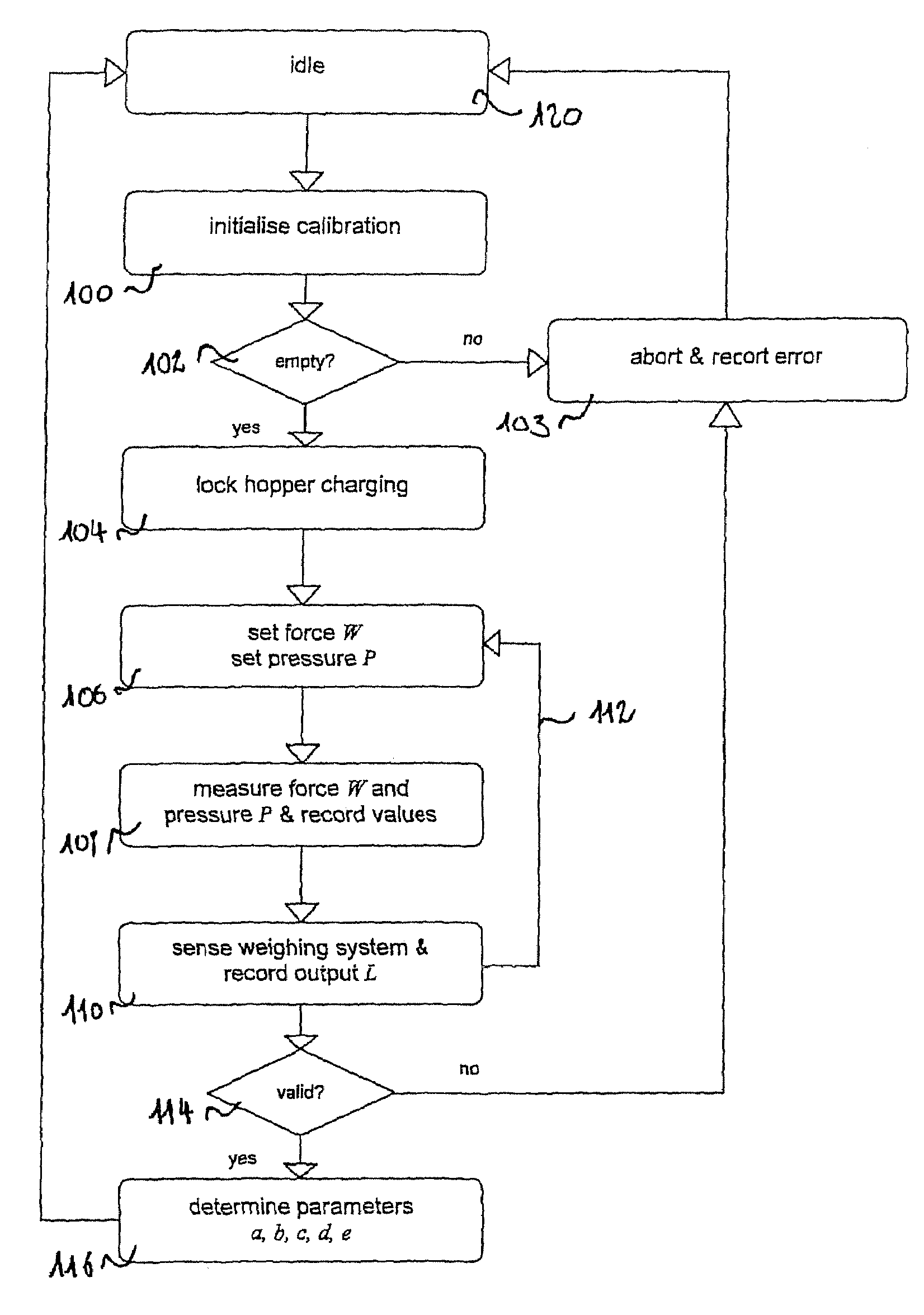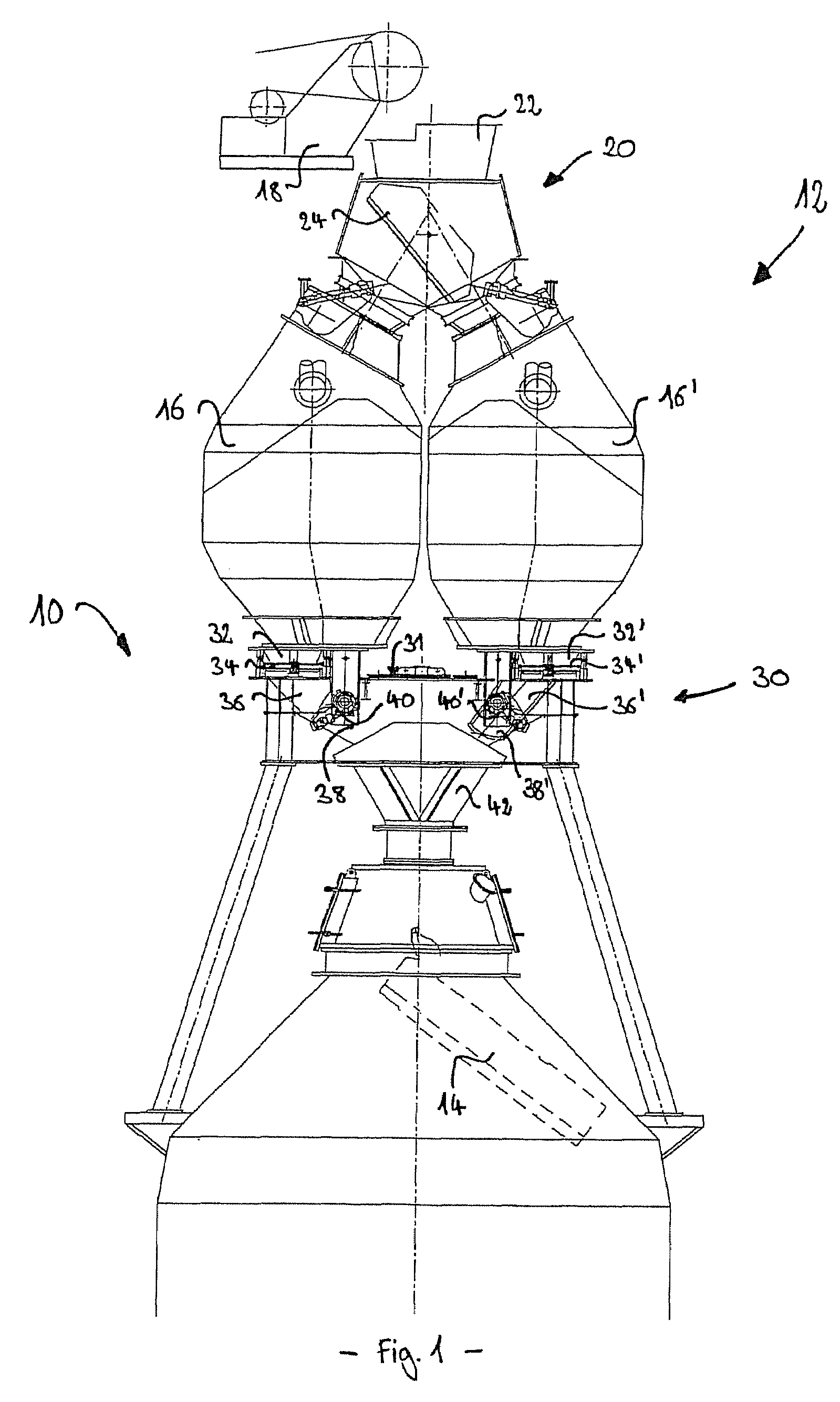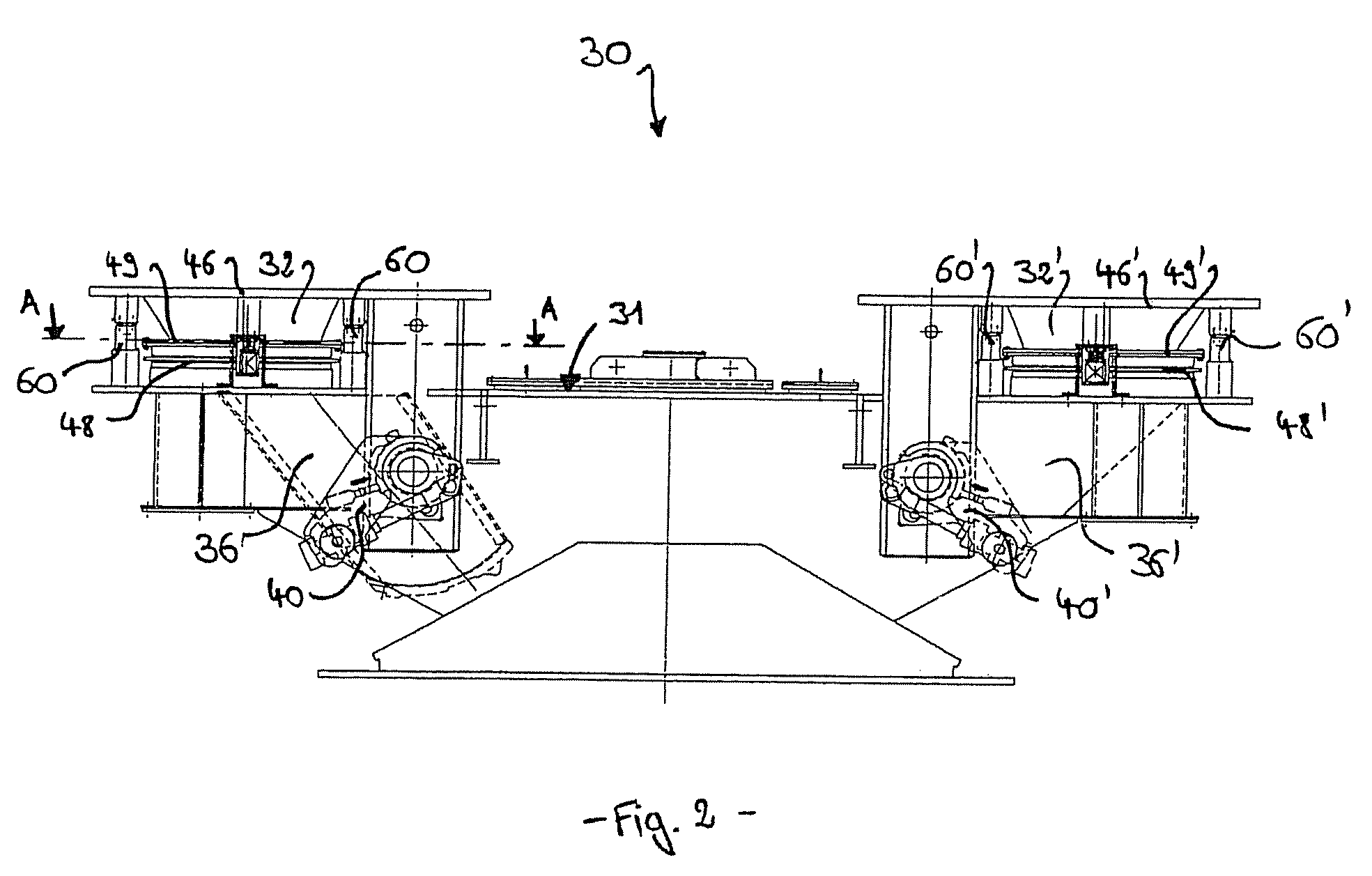Method and device for calibrating a weighing system of a blast furnace top hopper
a weighing system and top hopper technology, applied in furnaces, furnace monitoring devices, instruments, etc., can solve the problems of only positive efforts of weight measurement cells, compression forces, and lifting force on top hoppers, and achieve simple and reliable actuator construction, eliminate uncertainty factors, and the effect of high efficiency ratio
- Summary
- Abstract
- Description
- Claims
- Application Information
AI Technical Summary
Benefits of technology
Problems solved by technology
Method used
Image
Examples
Embodiment Construction
[0034]In FIG. 1, reference 10 globally identifies a blast furnace. A BELL-LESS TOP™ charging system 12 of the parallel hopper type uses, in a manner known per se, an angularly adjustable rotary chute 14 for distribution of charge material into the hearth of the blast furnace 10. Two storage or top hoppers 16, 16′ provide temporary storage of the charge material to be distributed by the chute 14. A conveyor belt mechanism 18 provides feeding of the top hoppers 16, 16′ through a feeding assembly 20 arranged above and connected to hoppers 16, 16′. The feeding assembly 20 comprises a collecting cone 22 and a deviation chute 24 for selectively feeding and guiding charge material into either hopper 16 or 16′. Hoppers 16, 16′ are constructed as pressure hoppers to insure that the blast furnace 10 remains sealed from the atmosphere during the charging process. Therefore, hoppers 16, 16′ having an air lock function are each provided with upper and lower sealing valves (not shown).
[0035]A dis...
PUM
 Login to View More
Login to View More Abstract
Description
Claims
Application Information
 Login to View More
Login to View More - R&D
- Intellectual Property
- Life Sciences
- Materials
- Tech Scout
- Unparalleled Data Quality
- Higher Quality Content
- 60% Fewer Hallucinations
Browse by: Latest US Patents, China's latest patents, Technical Efficacy Thesaurus, Application Domain, Technology Topic, Popular Technical Reports.
© 2025 PatSnap. All rights reserved.Legal|Privacy policy|Modern Slavery Act Transparency Statement|Sitemap|About US| Contact US: help@patsnap.com



